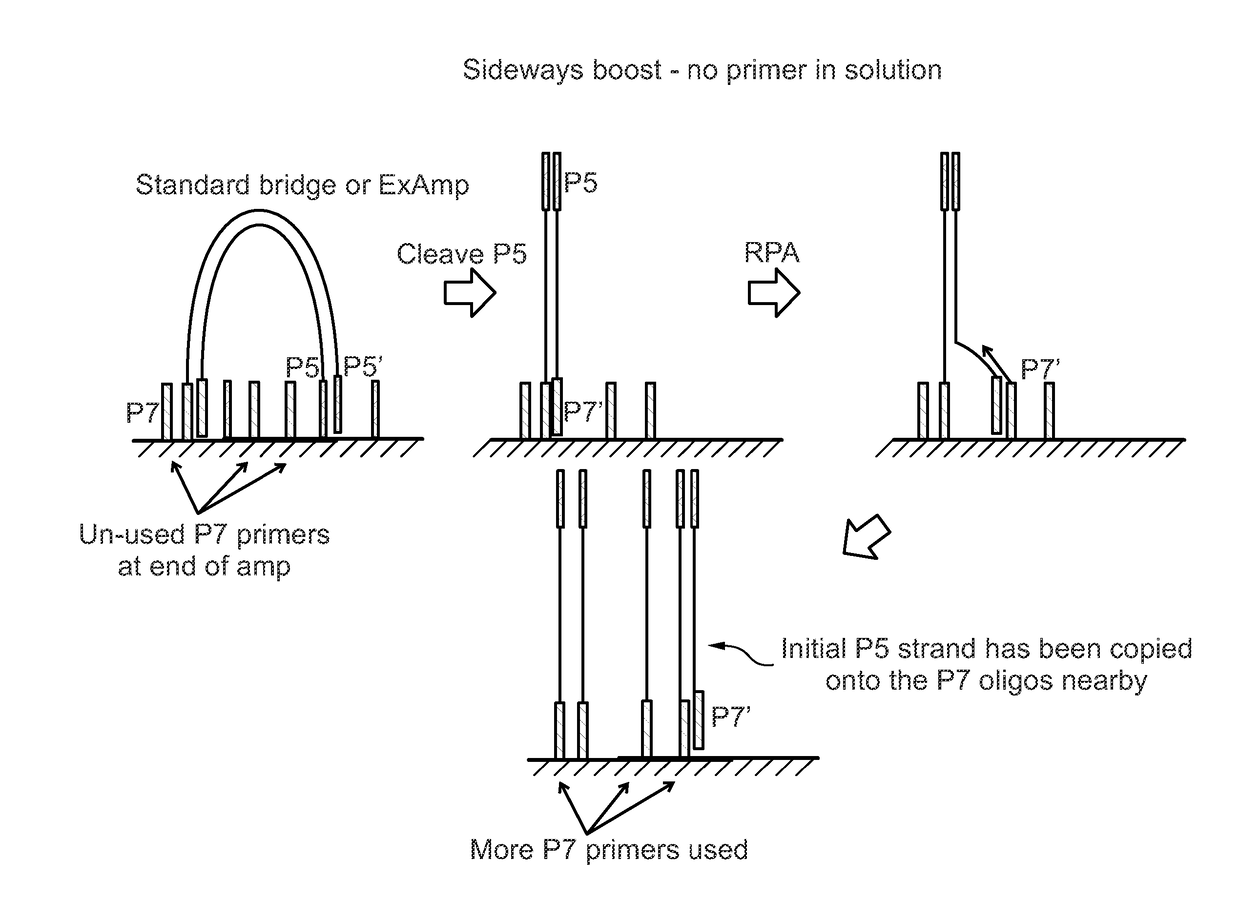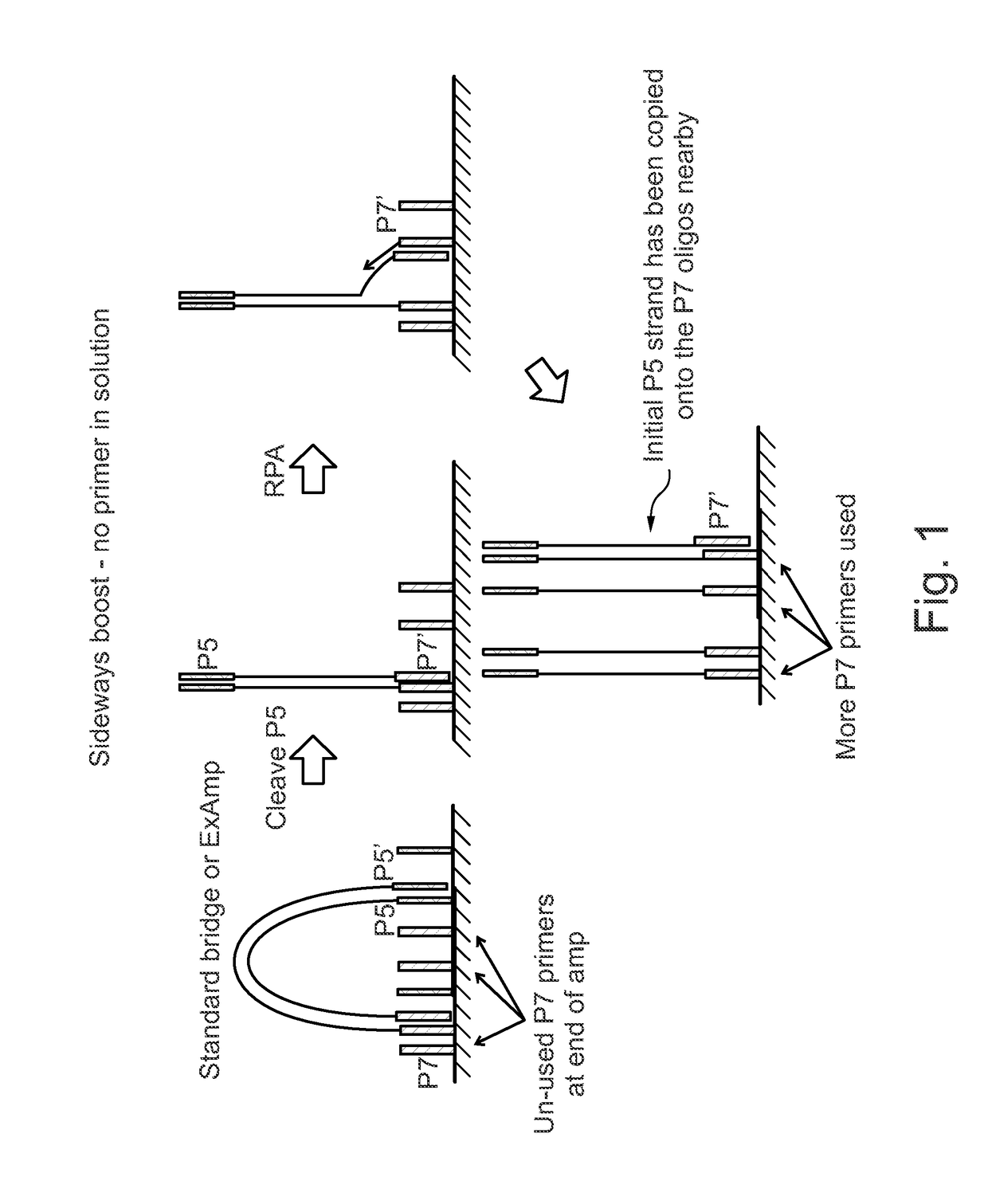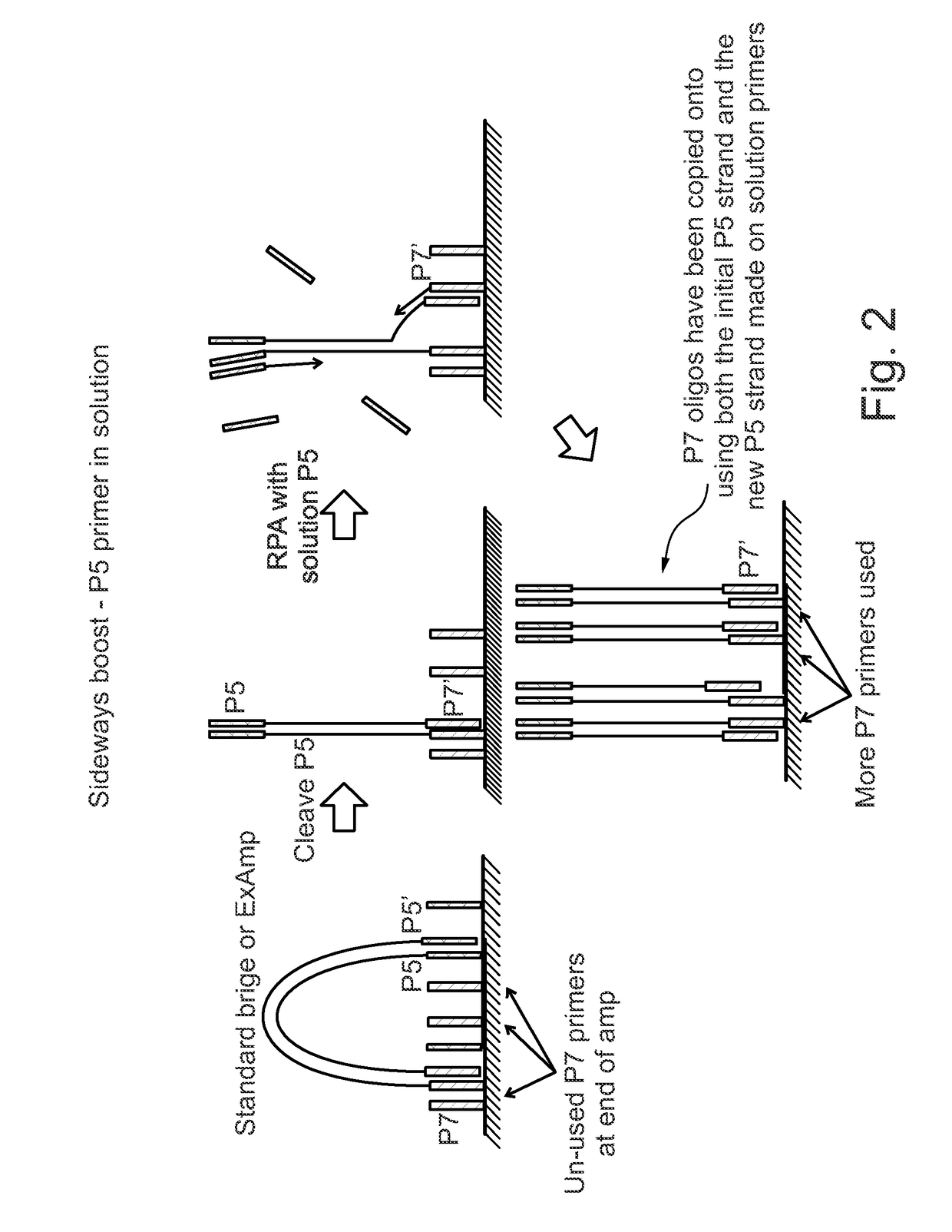Enhanced utilization of surface primers in clusters
a surface primer and cluster technology, applied in the field of enhanced utilization of surface primers in clusters, can solve the problems of limiting read length, limiting read length, and affecting the robustness of sequencing biochemistry, so as to improve densities, enhance utilization of surface primers, and improve densities
- Summary
- Abstract
- Description
- Claims
- Application Information
AI Technical Summary
Benefits of technology
Problems solved by technology
Method used
Image
Examples
example 1
[0062]Comparative Analysis of Amplification Methods with First Cycle of Sequencing
[0063]This example describes a comparison of standard ExAmp amplification to other methods that include a subsequent primer cleavage event and amplification under partial denaturing conditions, with or without the addition of primer in solution.
[0064]A standard single read HiSeq flowcell (Illumina) was seeded with 2 pM of CT9814 human genomic library. Clusters were generated by v1 ExAmp (Illumina, PCX1 / 2 / 3) with 15 minutes of amplification. Lanes were treated with periodate to linearize the P5 by cleaving the diol linker, thus completely removing the P5 primer. The clusters were then treated for signal boost by heating to 38° C. and then flushing with Illumina's v1 ExAmp reagents (lane 2) or ExAmp reagents and P5 / SBS3 oligo (lane 3) for 10 min. Lane 1 was not further treated and used as control (no ExAmp control). The flow cell was stained with SYBR Green (Molecular Probes, 1 / 5000 dilution in 0.1M Tris...
example 2
[0067]Comparative Analysis of Amplification Methods with First Cycle of Sequencing
[0068]Following the analysis described in Example 1 above, the flowcell was then prepared to do a first cycle of sequencing incorporation by hybridizing a sequencing primer and flushing over Illumina Incorporation mix IMX at 55 C for 5 minutes. Incorporation mix includes polymerase, and a labeled mix of 3′-blocked dNTPs. After washing with Illumina wash buffer PR2, a scan mix of 0.1M Tris / 0.1M sodium ascorbate was flushed into the flowcell and 1st cycle images were taken on a fluorescence microscope, as shown on FIG. 4. A further imaging analysis was performed by quantitating Cy3 and Cy5 staining of the clusters in each lane. As shown in the bottom panel of FIG. 4, quantitation shows that sideways boost alone (lane 2) generates clusters that are at least 2× brighter compared to control. Sideways boost with solution primer (lane 3) yields clusters that are more than 6× brighter compared to control.
PUM
| Property | Measurement | Unit |
|---|---|---|
| length | aaaaa | aaaaa |
| densities | aaaaa | aaaaa |
| brightness | aaaaa | aaaaa |
Abstract
Description
Claims
Application Information
 Login to View More
Login to View More - R&D
- Intellectual Property
- Life Sciences
- Materials
- Tech Scout
- Unparalleled Data Quality
- Higher Quality Content
- 60% Fewer Hallucinations
Browse by: Latest US Patents, China's latest patents, Technical Efficacy Thesaurus, Application Domain, Technology Topic, Popular Technical Reports.
© 2025 PatSnap. All rights reserved.Legal|Privacy policy|Modern Slavery Act Transparency Statement|Sitemap|About US| Contact US: help@patsnap.com



